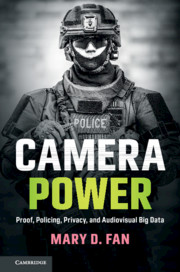Book contents
- Camera Power
- Camera Power
- Copyright page
- Dedication
- Contents
- Figures
- Tables
- Acknowledgments
- Introduction
- Part I Toutveillance Power and Police Control
- Part II Audiovisual Big Data’s Great Potential and Perils
- 4 Audiovisual Big Data Analytics and Harm Prevention
- 5 Partisan Perceptions
- 6 Privacy and Public Disclosure
- Part III Frameworks for Moving Forward
- Appendix The Collection and Coding of 213 Body Camera Policies
- Index
6 - Privacy and Public Disclosure
from Part II - Audiovisual Big Data’s Great Potential and Perils
Published online by Cambridge University Press: 03 May 2019
- Camera Power
- Camera Power
- Copyright page
- Dedication
- Contents
- Figures
- Tables
- Acknowledgments
- Introduction
- Part I Toutveillance Power and Police Control
- Part II Audiovisual Big Data’s Great Potential and Perils
- 4 Audiovisual Big Data Analytics and Harm Prevention
- 5 Partisan Perceptions
- 6 Privacy and Public Disclosure
- Part III Frameworks for Moving Forward
- Appendix The Collection and Coding of 213 Body Camera Policies
- Index
Summary
- Type
- Chapter
- Information
- Camera PowerProof, Policing, Privacy, and Audiovisual Big Data, pp. 156 - 192Publisher: Cambridge University PressPrint publication year: 2019
- 2
- Cited by



